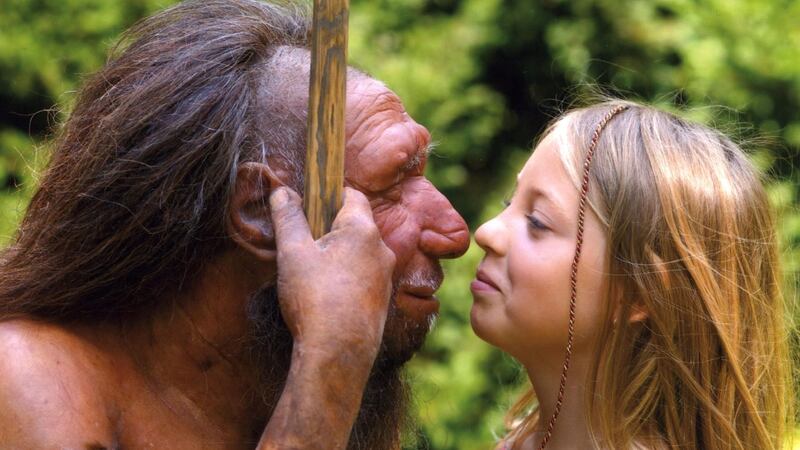Neanderthals had more in common with Usain Bolt than Mo Farah, according to a study that overturns previous conceptions of the extinct human cousins.
In contrast to the popular view, they were sprinters rather than long distance joggers, and occupied forests, not bleak tundra-like wasteland.
Evidence had previously pointed to Neanderthals, who died out around 40,000 years ago, being adapted to the cold, harsh conditions of the last Ice Age.

Their physical features, including a heavy build, short limbs and a large nasal cavity, supported this view.
In addition Neanderthal fossil remains have often been associated with Ice Age mammals such as mammoths, woolly rhinos, horses and reindeer.
The new research suggests a different picture – Neanderthals as quick ambush hunters inhabiting warmer woods and forests where short bursts of speed would be an advantage.
Lead scientist Dr John Stewart, from the University of Bournemouth, said: “A closer look at the layers in which their fossils are found suggest Neanderthals actually lived at the same times and places as animals that are associated with warmer, woodland ecologies.
“In such an environment, a hunting strategy based on short bursts of power locomotion would be favoured. This led me to think about the physiques of modern elite athletes.
“The Neanderthal build is definitely more Usain Bolt than Mo Farah, more muscle than lean, and so perhaps more power sprint than endurance jog.”
The theory is backed by the discovery of gene variants linked to power sports performance in modern-day athletes.
Geneticists uncovered an unusually high proportion of these variants written into the Neanderthal genetic code – more than appear in living humans.
Dr Yoan Diekmann, a member of the team from University College London, said: “We found that the majority of these power-associated genetic variants were typically more common in Neanderthals than in humans today, who are known to be more endurance-adapted, reflecting their generally more slender builds.”
The findings are reported in the journal Quaternary Science Reviews.
Neanderthals belonged to a separate branch of the human family tree to modern humans, but the two co-existed in Europe for thousands of years.
They were already in Europe and Asia long before the ancestors of people living today migrated out of Africa.
Neanderthals were once widely thought of as stupid, brutish creatures more similar to apes than humans. Now they are known to have shared many traits in common with early modern humans, including the skilful use of tools and weapons, complex social lives and possibly language.
There is also strong evidence that some Neanderthals and early modern humans interbred. Between 1% and 2% of the DNA of people of European or Asian descent living today has been inherited from Neanderthals.
Study co-author Professor Mark Thomas, from University College London, said: “We are only scratching the surface of Neanderthal ecology, and it is always possible that other factors could explain the Neanderthal physique. But the convergence of palaeoanthropological and genetic evidence in this case is rather encouraging.
“Certainly, the approach we have taken signposts a valuable avenue for future research.”








